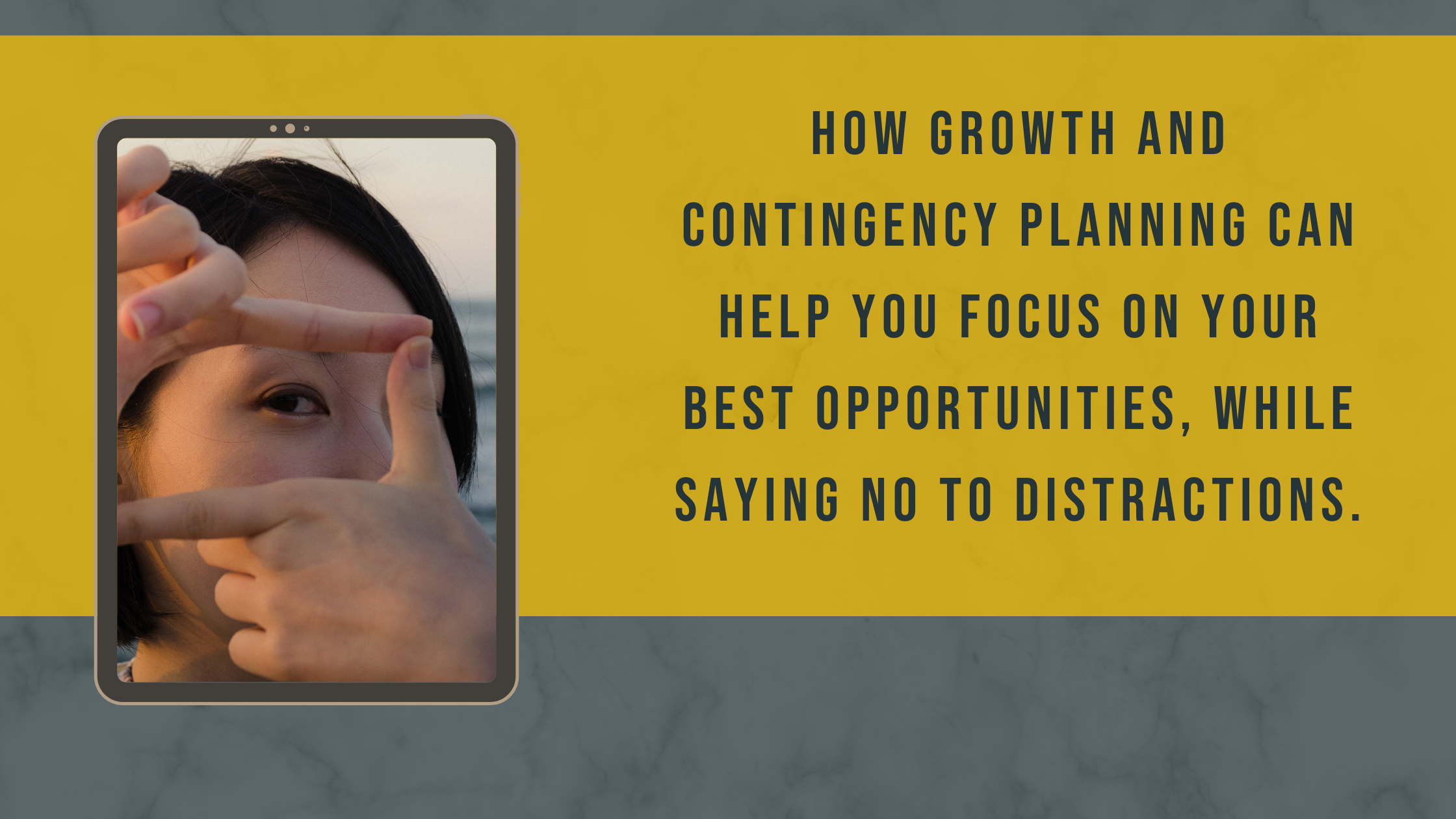
How Growth and Contingency Planning Can Help You Focus On Your Best Opportunities While Saying No To Distractions.
The economy is opening up in a big way. Forecasts now peg the GDP to rise as astounding 6% this year. For some organizations out there, it might feel like trying to drink out of a fire hydrant to keep up with that kind of growth.
Many of the SRC companies, for example, are seeing an unprecedented surge in demand for their products and services—levels the company hasn’t seen in nearly 40 years.
And with consumers now holding nearly $6 trillion in cash, the spending surge promises to continue into the coming years. What a turn of events, right? Coming out of the shutdowns of the pandemic, we might see a period of growth few of us have experienced in our lifetimes.

But there’s a catch. So many companies like SRC can’t keep up with customer orders. They’re facing shortages in both parts and people. Supply chains are stretched to their limits. The result is something you’d see in the pages of an economic textbook: supply can’t keep up with demand. As a result, we’re seeing spikes in prices and extended lead times for everything from pickup trucks and dishwashers to patio furniture.
Analyzing True Demand
The danger that organizations like SRC have to be on the watch for is what we might call a “false economy.” When organizations face shortages, they might double or triple order parts. Then, as soon as they get a delivery, they’ll cancel the other orders. All of a sudden, the company that thought it had a full plate of orders could suddenly be stuck with a lot of inventory it needs to unload unexpectedly.
On the other hand, those organizations that best assess the true demand for their products and services over the next few years will be looking at an amazing opportunity to grow their organization into the future. Despite challenges like the national debt and inflation, SRC, for instance, could potentially see a 40% increase in sales by 2023. But to do that, the company will be relying heavily on its employee-owners to make savvy business decisions on a daily basis.
And, in a period of surging demand, sometimes those decisions might actually involve taking very counterintuitive actions. You might actually have to say: “no.”
The Flip Side Of Contingency Planning
In business, you need to prepare for surprises in the marketplace by having a robust, proactive, and continuous contingency planning process. By business contingency planning, we mean a proactive process of planning for both the short-term and long-term security of your company. Our definition of contingency is a product or service that has already been researched, developed, and cost-justified, and can be activated on very short notice. It’s a key part of your sales planning process.
Typically, we think about contingency planning to help offset an unexpected hit to your business. What would you do, for instance, if 10% to 20% of your revenue suddenly disappeared at this moment? Would you be ready to activate contingencies—a plan B?
But has your organization ever put a contingency plan in place to handle an unexpected surge in demand? Or, to ask this in a different way, how does your organization decide on whether a new opportunity that comes in the door is worth chasing or not? During boom times, the ability to focus and to even say “no” can actually become a competitive advantage.
Revisiting Your Playbook
 Now that we’re approaching the middle of 2021 (where did the time go?), it’s a great time to consider bringing your team back together and discussing where everyone thinks your strengths, weaknesses, opportunities, and threats might be for the rest of the year. What is the market telling you? What are your competitors doing? What new opportunities have opened up—and should you pursue them? Ask yourself the question: Where do we have permission to win—and what capabilities do we need to get there?
Now that we’re approaching the middle of 2021 (where did the time go?), it’s a great time to consider bringing your team back together and discussing where everyone thinks your strengths, weaknesses, opportunities, and threats might be for the rest of the year. What is the market telling you? What are your competitors doing? What new opportunities have opened up—and should you pursue them? Ask yourself the question: Where do we have permission to win—and what capabilities do we need to get there?
You can make this conversation part of your High-Involvement Planning rhythm, where you’re getting input—and generating buy-in—from your team as you get ready to kick off the second half of the year.
We’ll follow up with the second part with this blog where we’ll dig into more details for how you might be able to tap the GGOB’s Growth and Contingency Planning tool to help your organization assess where your best opportunities might be going forward, or, perhaps, to simply double-down on your existing plays as your most.
Evaluating The Future
During times like these, the ability to get your team all focused on running the same plays to their maximum impact becomes an incredible strategic advantage.
Stability over the remainder of 2021 and into 2022 promises to be difficult. Every organization out there will be challenged to manage complexity like never before. The best weapon we all have against this is the kind of regular communication that comes with playing the Great Game of Business.
To learn more about GGOB’s approach to High-Involvement Planning, start with this primer while also considering signing up for our upcoming workshop.
.png)








.png)




-5.png)

